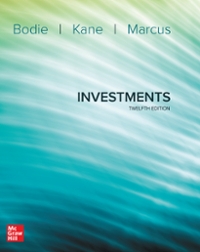Answered step by step
Verified Expert Solution
Question
1 Approved Answer
Provide Recommendations for Vogl based on the info below and in the attachment: Vogl Company is a U.S. firm conducting a financial plan for the
Provide Recommendations for Vogl based on the info below and in the attachment: Vogl Company is a U.S. firm conducting a financial plan for the next year. It has no foreign subsidiaries, but more than half of its sales are from exports. Its foreign cash inflows to be received from exporting and cash outflows to be paid for imported supplies over the next year are shown in the following table: Question 1. Based on the Information provided, determine Vogl net exposure to each foreign currency in dollars. Vogls net exposure to each foreign currency is indicated in the table below. Question 2. Assume that todays spot rate is used as a forecast of the future spot rate one year from now. The New Zealand dollar, Mexican peso, and Singapore dollar are expected to move in tandem against the U.S. dollar over the next year. The Canadian dollars movements are expected to be unrelated to movements of the other currencies. Since exchange rates are difficult to predict, the forecasted net dollar cash flows per currency may be inaccurate. Do you anticipate any offsetting exchange rate effects from whatever exchange rate movements do occur? Explain. The Mexican peso, New Zealand dollar, and Singapore dollar are all expected to move together against the U.S. dollar over the next year. It seems as if the dollar value of exposure on the net inflows is about equal to the dollar value of exposure on net outflows for the currencies. The exchange rate effects of NZ$ and MXP should be offset by the effects of one outflow currency. Question 3. Given the forecast of the Canadian dollar along with the forward rate of the Canadian dollar, what is the expected increase or decrease in dollar cash flows that would result from hedging the net cash flows in Canadian dollars? Would you hedge the Canadian dollar position? C$30,000*$.93=$27,900,000, the expected dollar cash flows from hedging the net cash flows. It is $900,000 more than the dollars that would have been received without hedging. It is ok to hedge the Canadian dollar position based on the information given. If the amount of Canadian dollars expected to be received may end up being less than expected, Vogl may not want to hedge all of it, but just a portion of the C$30,000,000. Question 4. Assume that the Canadian dollar net inflows may range from C$20,000,000 to C$40,000,000 over the next year. Explain the risk of hedging C$30,000,000 in net inflows. How can Vogl Company avoid such a risk? Is there any tradeoff resulting from your strategy to avoid that risk? Assume that the Canadian dollar received is less than the amount to be sold by the Vogl in the forward contract; Vogl will have to purchase Canadian dollars in the spot market. If the Canadian dollar happens to appreciate over the year, the firm will be significantly affected because it has to purchase Canadian dollars in the spot rate for a higher price that the exchange rate in the current forward contract. Vogl can avoid risk by hedging the transaction amount that it knows will happen. If it does this may prevent Vogl from hedging the full transaction, which means it will not be completely covered. As a tradeoff Vogl can attempt to cover the minimum net cash flow amount expected, which will force them to be partially exposed to exchange rate risk. Question 5. Vogl Company recognizes that its year-to-year hedging strategy hedges the risk only over a given year, and does not insulate it from long-term trends in the Canadian dollars value. It has considered establishing a subsidiary in Canada. The goods would be sent from the U.S. to the Canadian subsidiary and distributed by the subsidiary. The proceeds received would be reinvested by the Canadian subsidiary in Canada. In this way, Vogl Company would not have to convert Canadian dollars to U.S. dollars each year. Has Vogl eliminated its exposure to exchange rate risk by using this strategy? Explain. Vogl can possible avoid the year-to-year hedging decision with this strategy but they will be increasing its exposure to the Canadian dollar over time. It is basically reinvesting the proceeds in the same currency and thus compounding the exposure over time. This strategy defers the transaction exposure while the Canadian dollar build up over time, and the exposure will be much larger in the future when the Canadian dollars are converted to US dollars. When Vogl establishes a Canadian Subsidiary, it will subject to translation exposure. Another benefit of having a subsidiary is that some of the costs would be of the Canadian operation would be taken by the subsidiary in C$ so this reduces the amount to be hedged from repatriations. Also, Vogl could transfer some of its debt to Canada to match debt repayments to any net inflows to the US. Vogl would remained unhedged for any net inflows and retained earnings kept in the Canadian subsidiary. Provide Recommendations for Vogl. ________________________ See attachment for detailed info
Step by Step Solution
There are 3 Steps involved in it
Step: 1

Get Instant Access to Expert-Tailored Solutions
See step-by-step solutions with expert insights and AI powered tools for academic success
Step: 2

Step: 3

Ace Your Homework with AI
Get the answers you need in no time with our AI-driven, step-by-step assistance
Get Started


